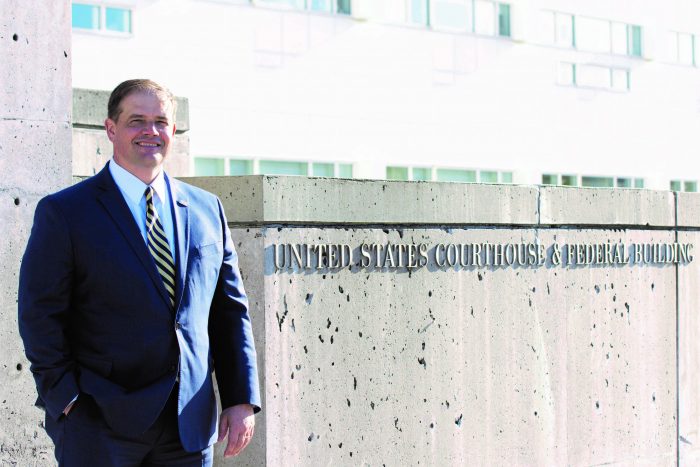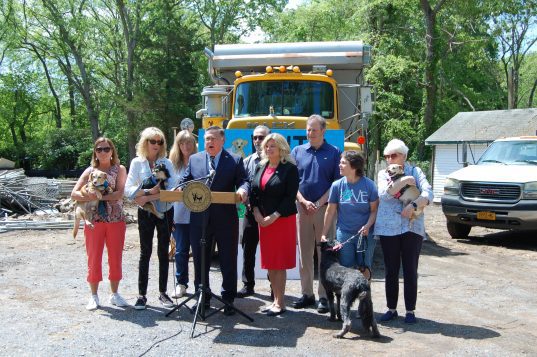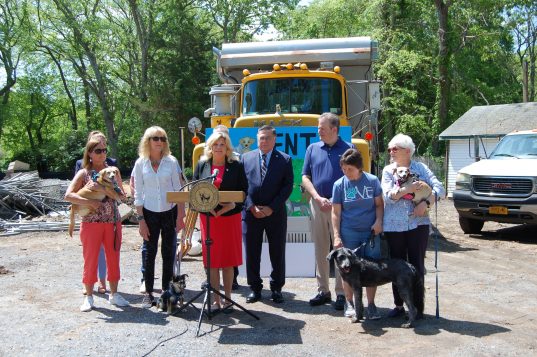Suffolk County District Attorney Raymond A. Tierney, New York State Senator Dean Murray, and Suffolk County Sheriff Errol D. Toulon Jr. have released public safety announcements to remind the public of the dangers of drunk and drugged driving, the importance of staying at the scene of a crash, and the legal and financial ramifications of a criminal arrest.
“We are more than half-way through this year’s ‘100 Deadliest Days of Driving.’ In Suffolk County alone, there have been at least twenty fatalities since Memorial Day weekend, many of which were caused by drunk or drugged drivers. That is almost three lives lost per week, many of which were completely preventable, and despite the prevalence and convenience of ride-shares. These are not crimes that are confined to Long Island. Drunk and drugged drivers threaten the lives of random and innocent roadway users of every age, gender, ethnicity and economic status every single day throughout New York State,” said District Attorney Tierney. “Senator Murray, Sheriff Toulon, and I continue to fight for the safety of all New Yorkers. We urge everyone to remember that any amount of alcohol or drugs in your system is too much when it comes to driving. The legislators up in Albany must pass the ‘Deadly Driving Bill’ to save countless lives and make our roadways safer across New York State.”
“When New York State rushed through legislation to legalize marijuana, it was done so in a way that left many questions unanswered. Who can legally sell it? Who can legally buy it, use it or consume it,” said Senator Murray. “Some of the biggest questions surround the use of marijuana while operating a motor vehicle. There is definitely a need to educate the public and I’m thrilled to team with Suffolk County District Attorney Ray Tierney and Suffolk County Sheriff Dr. Errol Toulon, Jr., to put these PSA’s out to the public to help with that education process. I also want to thank JVC Broadcasting, Inc.’s President & CEO, John Caracciolo, for his willingness to immediately get these PSA’s up and running on his multiple Long Island radio stations. Everyone working together can truly make a difference.”
“Drunk and drugged driving continues to claim innocent lives on our roads,” said Sheriff Toulon. “Partnering with District Attorney Raymond A. Tierney and New York State Senator Dean Murray, we are committed to raising awareness and pushing for legislative changes to make our roadways safer. Remember, one decision to use a ride-share can prevent a tragedy and save lives.”
“All of us at JVC Broadcasting are committed to work with our elected officials to get this important message out,” said JVC Broadcasting, Inc. President and CEO, John Caracciolo. “We were happy to donate the airtime to make it possible.”
In January 2024, District Attorney Tierney rallied with a bipartisan group of local and state officials, district attorneys, traffic safety advocates, and families and friends of those affected by drunk and drugged driving, and called on lawmakers to pass a bill that would close the loopholes in the drugged driving law. Senate Bill S.3135 and Assembly Bill A.174, also known as the “Deadly Driving Bill”, closes the loopholes. Current New York State law does not allow an individual to be arrested and prosecuted for operating a vehicle while drugged, unless the officer can pinpoint the drug that driver is impaired by, and that drug must be listed Section 3306 of the Public Health Law.
All public safety announcements were recorded and can be found on the Suffolk County District Attorney’s Office’s website. The PSAs will run on all JVC Broadcasting Stations: WPTY Party 105 FM, WRCN LI News Radio 103.9 FM, WJVC My Country 96.1 FM, WBON La Fiesta 98.5 FM, 96.9 FM, 1490 AM, 1580 AM, Big Hits 98.1 FM and Long Island Envivo 1440 AM and 93.3FM.





















